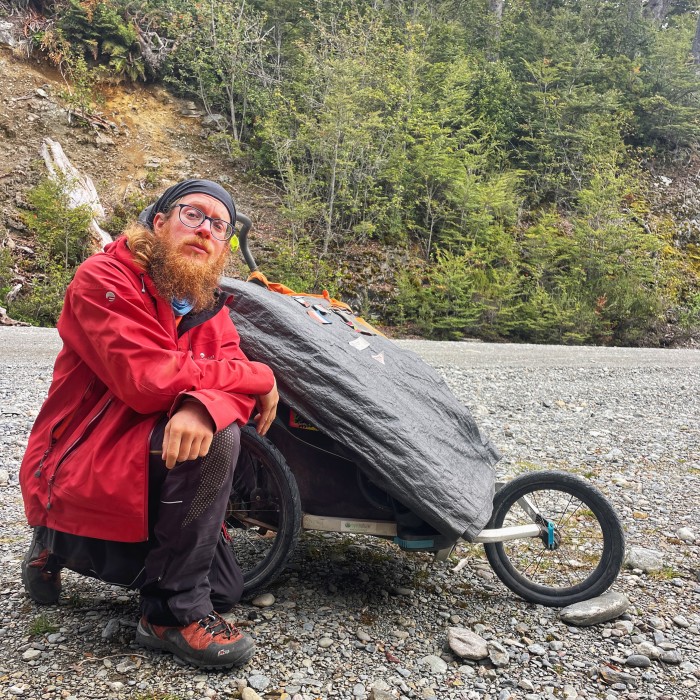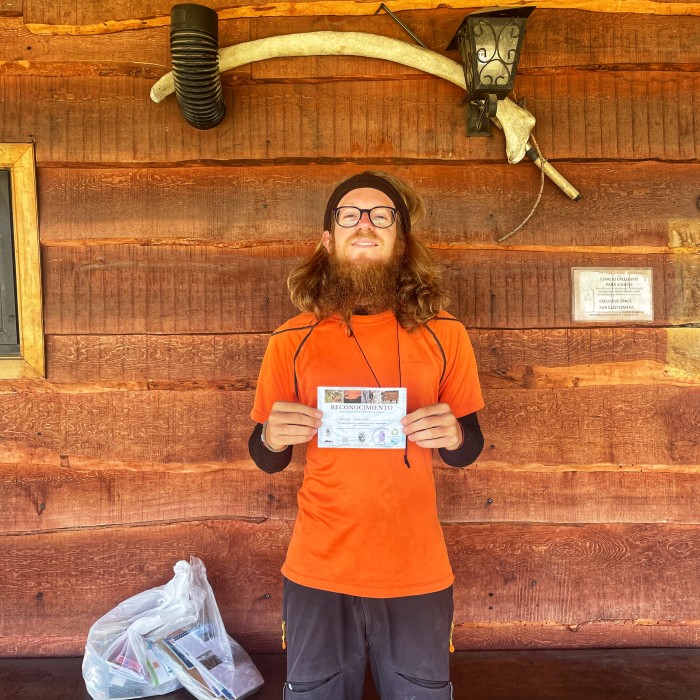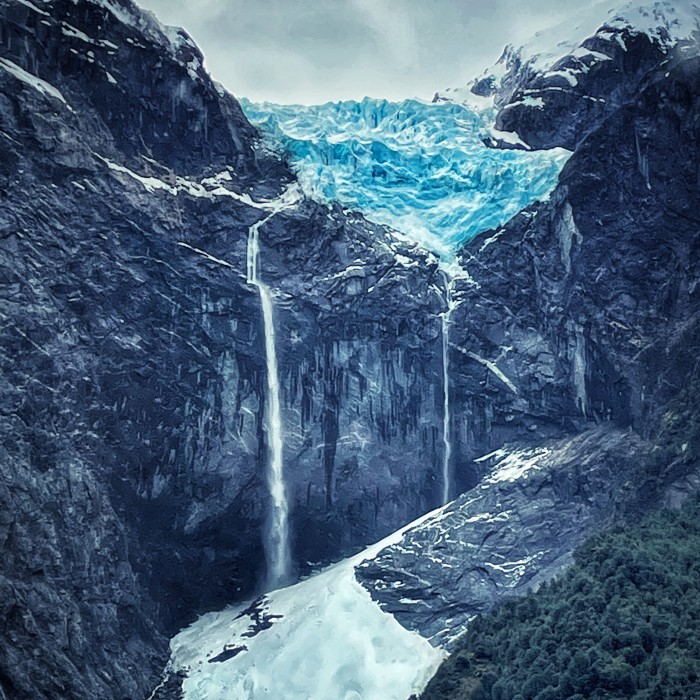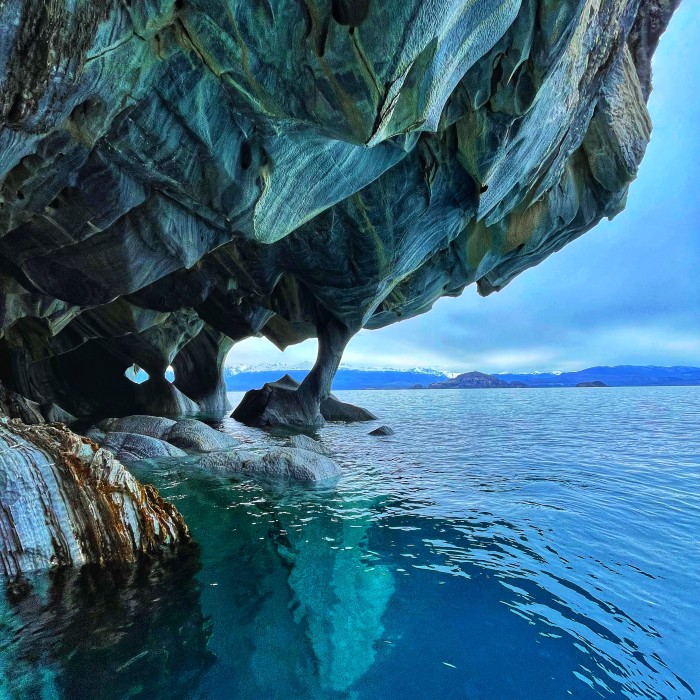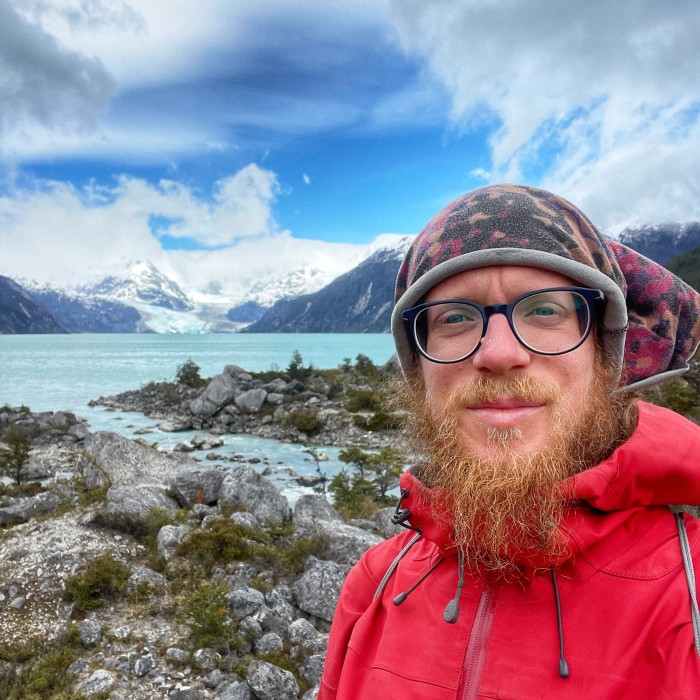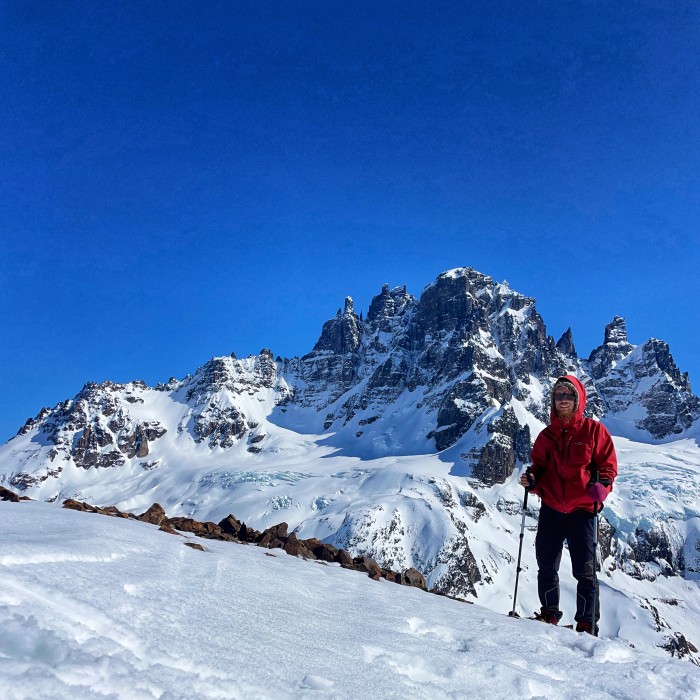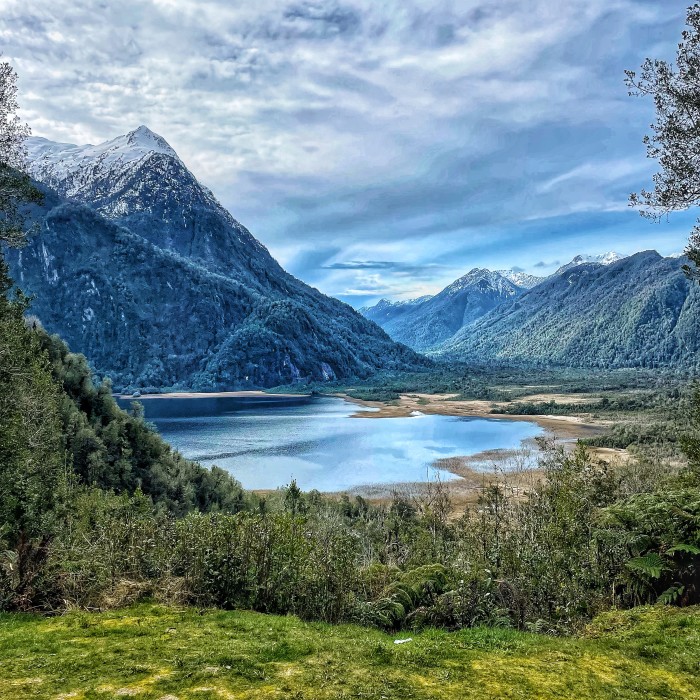
Pieroad – on foot to “the end of the world”, along the Carretera Austral
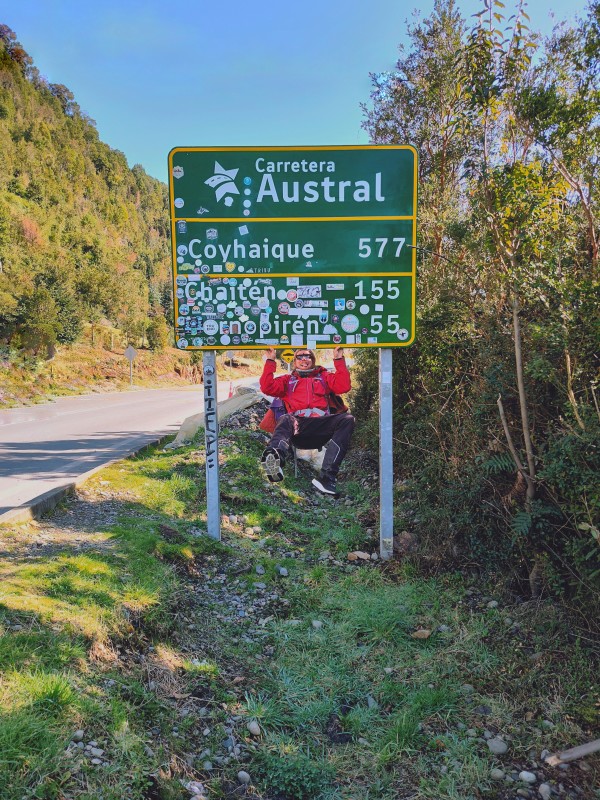
We met with Nicolò Guarrera – and Ezio, his loyal companion and baggage – at the tip of Patagonia, after he had covered thousands of kilometres on foot along the Carretera Austral. A journey Nicolò began years ago, with a couple of remarkably ambitious goals: the first and most important one, to go around the world on foot; the second one, to embrace slowness and enjoy the meaning of such a long itinerary.
Let’s travel to this immense corner of South America through his travel log, Pieroad.
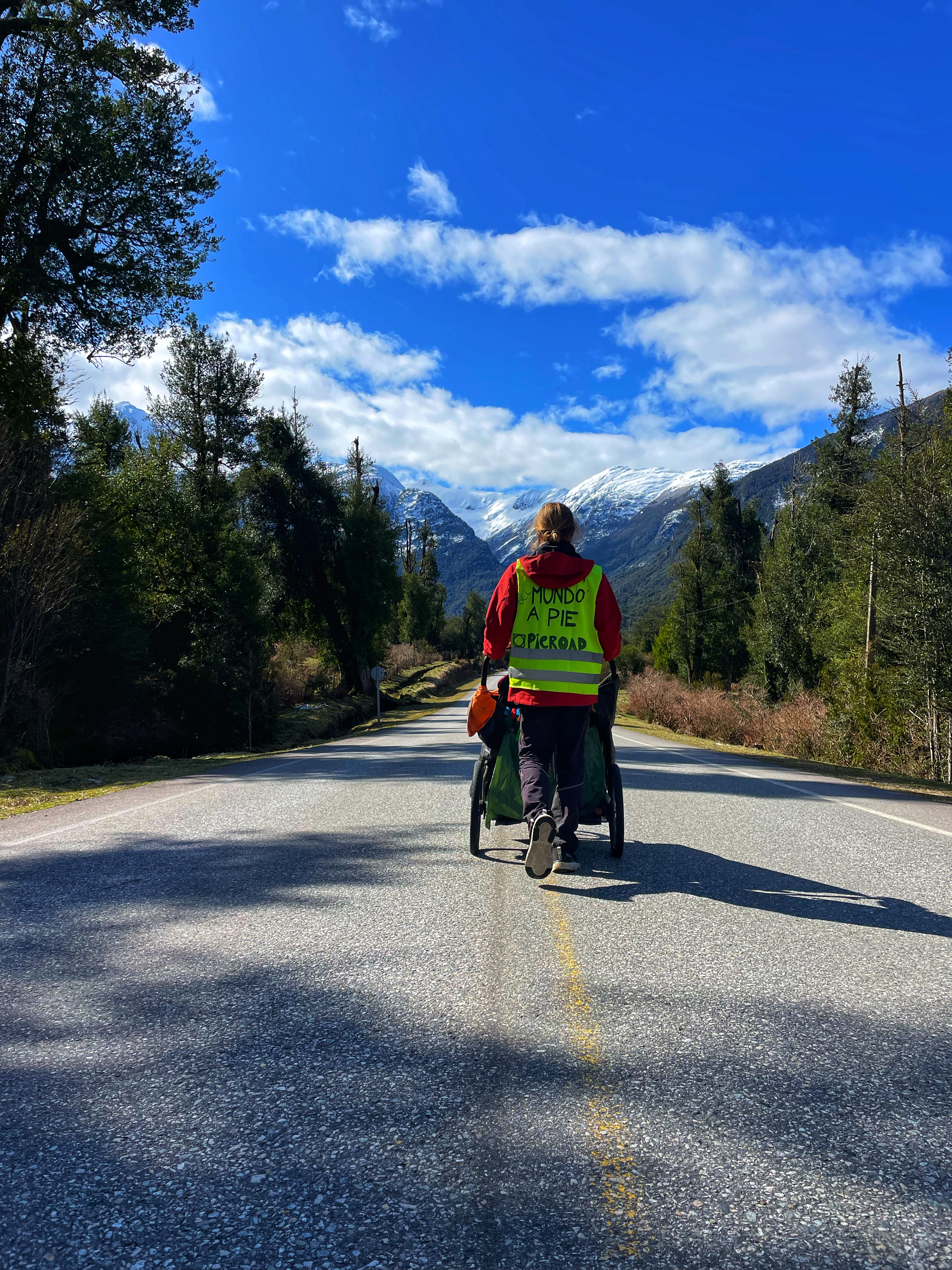
Patagonia: between imagination and real boundaries
What comes to your mind when I mention Patagonia? Dig around in your memories, put together fragments from anecdotes you’ve heard and colourful frames from TV-show adventures lost in time. What did you find? Where did you suddenly find yourself?
The world is round, yet if we spread it out on a map with Europe in the middle, it seems to have two corners. Australia, fifteen thousand kilometres from Italy on the bottom right, and the tip of Latin America on the opposite side, like a land appendage that extends south and almost touches Antarctica: Patagonia. It is shaped by two halves: Argentina on the eastern side, crouching on the beaches of the Atlantic Ocean, and Chile lying behind it, back to back, looking at the Pacific and watching the last sunset of the day.
Two roads cross it: legendary itineraries that make eyes twinkle with the sense of freedom they evoke. The Ruta 40 runs on Argentinian soil, like a backbone to the country connecting the border with Bolivia to Tierra del Fuego. In Chile, there is the lesser known Ruta 7, unravelling along 1,247 km from Puerto Montt to Villa O’Higgins, lining up microscopic pueblos so isolated that time seems to have stopped there to sip a steamy mate. Chileans call it Carretera Austral: the road to the end of the world.
Hundreds of travellers take the Carretera Austral every year: on their motorcycles or bicycles, hitchhiking sometimes, renting a car others. Few, if any, have experienced it in the slowest and most human way: on foot. At least this year, Ezio and I seem to be the only ones: an Italian man and his stroller, committed to walking around the world. A 30,000-km, 5-year dream that has led us here, right to the middle of our itinerary, to the beginning of the Carretera Austral, following enthusiastic advice from dozens of people.
But what makes Chilean Patagonia so special? It’s an isolated place, where the connection to Nature and between people is stronger than the Internet’s. Over a surface only slightly smaller than Italy, seventeen National Parks protect eleven million hectares of land, safeguarding tens of ecosystems that are completely different from one another, and unparalleled in the world. Patagonia’s woods and forests are home to a gigantic biodiversity and capture three times as much carbon dioxide as the Amazon rainforest. The Andes dive into the ocean creating a mysterious maze of unexplored glaciers and fjords, alive with waterfalls, lakes and rivers flowing with unreal colours. Two small Antarcticas rise between land and sea: the Ice Fields, Earth’s largest glaciers, as big as Italian regions like Molise and Sardinia. And that’s just the beginning.
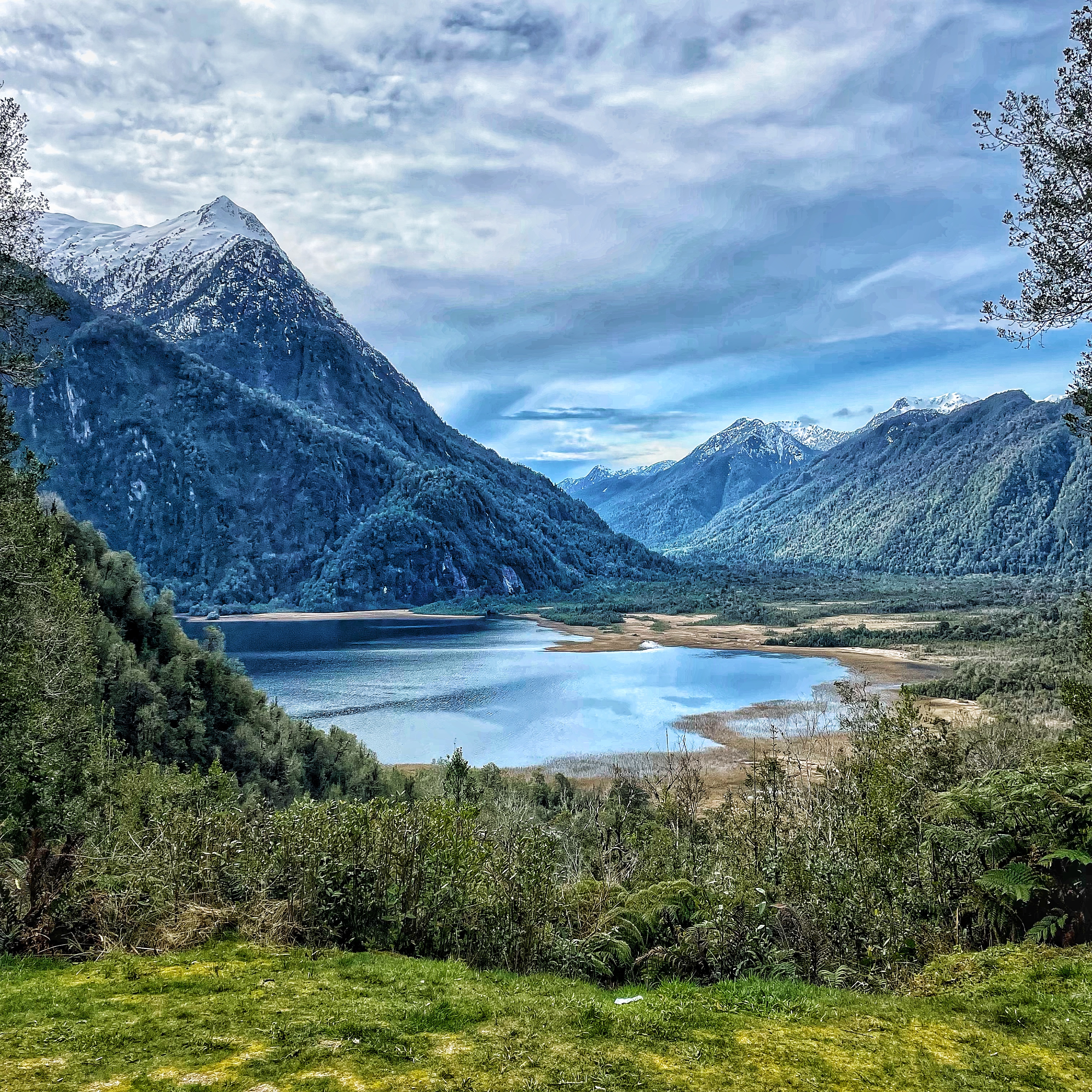
Three months to reach the end of the world: the itinerary
I close the National Parks Passport and stop daydreaming for a moment. The small book, with its dark red cover, gathers so much information about the itinerary I am about to follow. I leafed through it before leaving: I like studying the route before I start a new adventure, but now it’s time to go. I am in Puerto Montt, on the plaque that marks Km 0 on the Carretera Austral. I have three months to cover it, the time left on my Chilean visa. Destination? The Villa O’Higgins pueblo, seven hundred souls living amid snowy mountaintops and lakes on the border with Argentina. I start walking, heading south.
Leaving the city behind, I come to the first National Parks of the Carretera Austral. The Pumalin has a striking history. An American businessman and naturalist, Mr Douglas Tompkins, fell in love with Patagonia in the 1990s and, after selling the shares of the company he had founded, began purchasing properties between Chile and Argentina. His purpose was to save them from indiscriminate exploitation: mines, loggers and intensive farming were destroying these regions. The locals did not trust him, and hindered his efforts any way they could. They didn’t understand why this gringo was there, buying their lands just to leave them as they were – just to do nothing with them? Something was off. The picture became clear a few years later, when Tompkins combined the lots he had purchased into different Nature Reserves, giving anyone interested the chance to visit them. He thus proved that pristine Nature was not only a resource to exploit, but a whole world to cultivate and share. And that’s not all. In the early 2000s, Tompkins decided to donate everything he had bought to either Argentina or Chile, according to where the borders fell, asking in return for the two states’ commitment to create National Parks. It was the largest private land donation in history, comparable to the size of Sicily.
The Pumalin National Park is part of this legacy, and today features campsites and dozens of hiking trails. I have travelled along many of these routes – the most impressive of them being the ascent to the Chaitén volcano. From the summit, which exploded in a devastating eruption a few years ago, you can see Patagonia in its entire width, down to the Pacific Ocean. The crater looks like a Dalí painting, a desert of sand from which sloping black trunks emerge, the remnants of the eruption. Inside the crater, the rain has formed a lagoon, in stark contrast to the arid and dry surroundings.
Continuing south, the landscape changes. This is the region with the most rainfall in all of Chile: lush greenery provides the backdrop to solitary mountains with snow-capped peaks. It’s the beginning of September and it’s still winter, the days are rainy. I am well equipped: a fire-red Valdez jacket protects me from the water for several hours. Somewhat heavy, it also protects me from the cold and wind yet does not capture condensation. It would be ironic to be protected from water outside, only to find myself drenched in sweat! An inner pocket holds my phone, which I carry on my body to count the steps I take – the tally is sixteen million so far. The jacket is paired with rain trousers, which are also nice and breathable. My shoes are the only sore spot. There is a trade off between waterproofing and fit: I could wear hiking boots to avoid getting my feet wet, but I would have to sacrifice the cushioning of a soft rubber sole. That would kill my joints, as I walk forty kilometres a day on asphalt. I breathe a sigh of resignation. I’ll be able to dry my feet at some point.
I leave Los Lagos to enter the next region: Aysen. Chile is an extremely long strip of land – 5,000 km as the crow flies from top to bottom – but it is only an average of two hundred kilometres wide. The regions follow one another from north to south, and have been numbered to make it easier to know their order. Aysen is the eleventh, so Los Lagos, where I come from, was the tenth. In Los Lagos, Patagonia is nicknamed “the Green” due to the constant rainfall that waters the land year-round across all seasons. I ask around if Patagonia also has an epithet in Aysen, but it does not. It’s up to us to do her justice and find her a nickname.
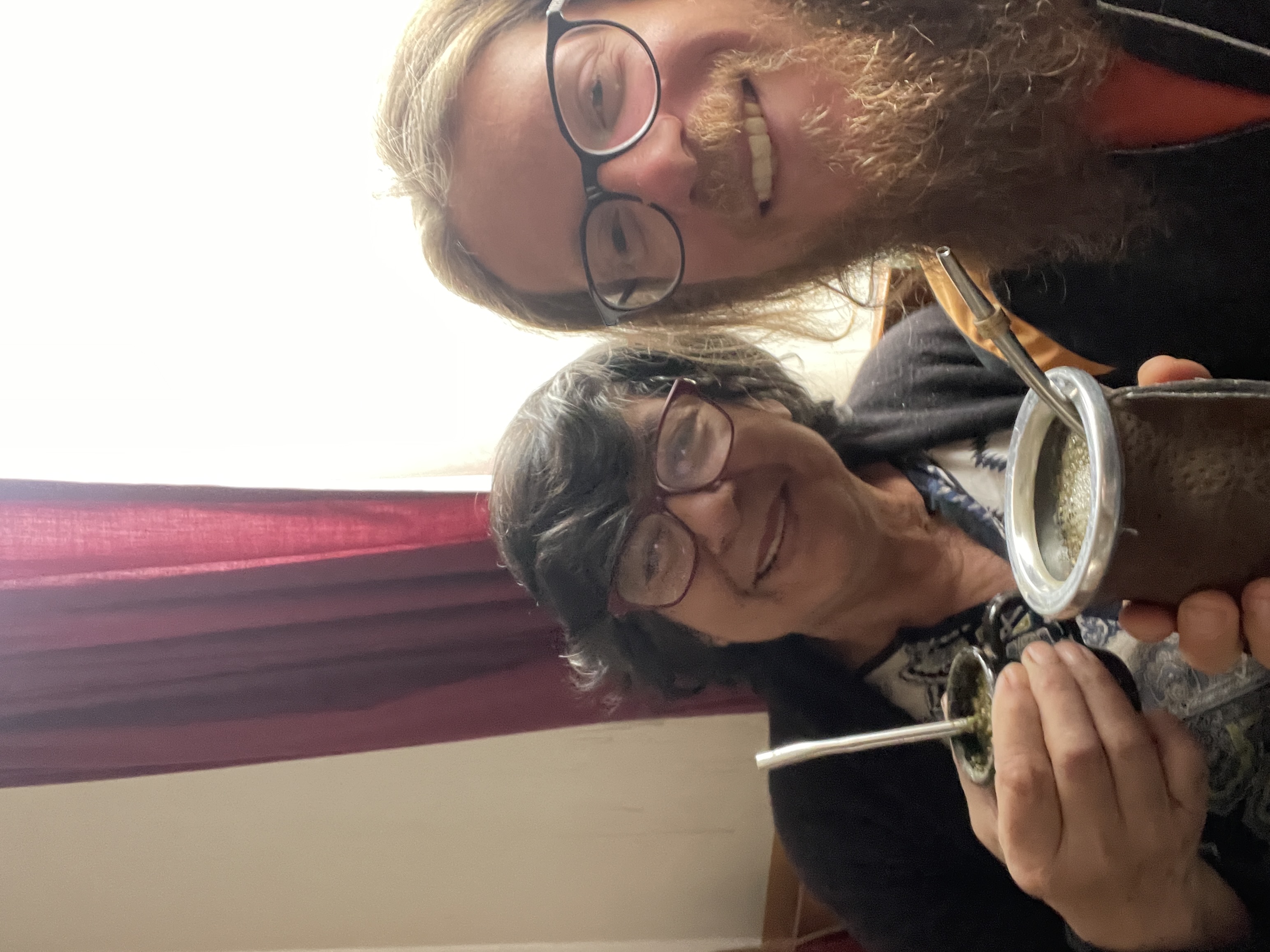
Villages and encounters
Pueblos are truly minuscule, with only a few hundred people living in most of them. One of them is Puyuhuapi, on the shores of the fjord of the same name. The forecast is for rain throughout the week, so I decide to stop and wait for the clouds to clear up. Before I left home, my friends convinced me to document this trip around the world on social media, and one of the consequences – as pleasant as it was unexpected – is that different people contact me on Instagram to offer their hospitality. This happened in Puyuhuapi too, so I’m heading to Javier and Magdalena’s house. I set out two years ago, but I still feel a bit strange knocking on strangers’ doors and settling in on their couch for a few days. I guess it’s the same for them, but they give me such a warm welcome that we quickly become friends. I immediately decide to win them over with food, and assume control of the kitchen the first evening: handmade gnocchi, according to my grandmother’s recipe. One lesson I’ve learned during this trip is that having an Italian in the kitchen always turns into a great story. Learn a few homemade recipes and jump in: you can’t imagine how many doors it will open and how many people you will get to know. My hosts are very nice and within a couple of days we break down the barriers of formality. The Fiestas Patrias happen to be while I’m staying with them: two days celebrating national independence, on 18-19 September. There are parades, dances and banquets of all kinds throughout the week: we join the celebrations held in the pueblo, inside the spacious school gym – the flood stopped me, not the pueblo.
Then it’s time to move on, as always. After Puyuhuapi and a couple of even smaller villages, I come to Coyhaique, the regional capital where half of Aysen’s population is concentrated. However, before getting there I cross another National Park, the Queulat. Inside it is the Ventisquero Colgante, a stretch of ice hanging in mid-air, originating from the glacier of the same name. Years ago, it had grown to graze the mint-coloured lagoon that lies below it, but recently it has receded by hundreds of metres due to global warming. Just the day before I arrived, a huge glacial mass broke off the Ventisquero, shattering into a thousand pieces. Knowing the sad fate of this glacier and all the others around the world endows them with a dramatic, fragile beauty. How many people will still be able to visit them? And what will they see in them if they are already mutilated, like heroes of a war they are unable to fight or win?
With these thoughts in mind I arrive at the regional capital a week later – that’s how long it takes me to cover 250 km. In the Chono language, spoken by the natives, Coyhaique means “between the lakes”. I’ll let you guess why that’s the city’s name. I stop for only a couple of days, to rest and get some groceries. This will be the last city I see for the next two months: I will have to face difficulties in finding supplies, scarcity of fresh fruit and vegetables, and high prices. I load up with kilos of quinoa, dried fruit and dehydrated food – thanks to Ezio I can carry up to 50 kilos, equipment included. Then I set off again, the load I have to push making me sweat at each climb.
There are breathtaking views on either side of the Carretera Austral, and every time I reach a village someone welcomes me with open arms. I meet a few travellers on motorcycles, and very few on bicycles: the summer has not started yet. An immense peace fills my lungs at every breath, and sometimes I find myself listening to the wind with more attention, my gaze lost in the distance. This place echoes with music that plays with the rustling of the leaves and the chirping of squat chucaos. Harmony brings things back to their natural dimensions: the immense mountains, a small man, the impetuous force of the river that waters the woods.
One day, I take a detour toward the Laguna Leones, a gem even most of the local population does not know about. I get there after several hours of trekking, after camping in a large grassy clearing. The absence of people allows me to feel a solemn vibration in the air. Behind the lagoon, indeed, lies the legendary North Ice Field – which no one has ever managed to cross. There is a single settlement, located on its northern end, where the ranger of the Exploradores Glacier – one of the many that make up the Ice Field – lives. Antarctica, in comparison, seems almost crowded. Knowing that no one has ever been able to successfully cross it gives it the charm of an undefeated destination, ridiculing the tenacity displayed by humankind and technology. Nature’s power is still strong, and can be immediately perceived here.
There is no end to beauty – you can feel it even in encounters with simple people. In Cochrane I am welcomed by Raquela, and every morning we find ourselves sipping from a hot mate in front of the wood stove, which is the kitchen and heating system in all Patagonian houses. Mate is a small container from which you drink a bitter-tasting infusion, yerba mate. You fill it halfway with yerba and after tilting it you place the bombilla – a metal straw – under the yerba so that it doesn’t move; finally, you pour hot water over it. This operation is known as cebar and is carried out by the person who prepares the mate, filling it with water from time to time because the mate is small and just enough for three or four sips. Every time the water runs out, the mate goes back to the same person, who pours water and passes the container to the next person, until everyone has drunk. Once everyone has had a drink, you start a new round and go on until the water is finished. Whoever has had enough and does not want any more can say “thank you”, and skip their turn.
Villa O’Higgins
Cochrane is where the last 220 km of the road start. Mid-way, a ferry goes from one side to the other of the Mitchell Fjord – one of the four fjords you can see along the Carretera Austral, where you have to embark. October is ending and I am about to arrive at Villa O’Higgins, the last pueblo on Ruta 7. It is an isolated village, more than one hundred kilometres from the nearest settlement. It is surrounded by tall mountains providing a natural border with Argentina, and long lagoons with spectacular colours. Patagonia has filled my eyes with its wonders for two months, but once again it decides to render me speechless. Villa O’Higgins is a gem nestled between the Andes, and the miradores on the eastern side’s hills let the gaze wander over enchanting surroundings, until you reach the celestial waters of Lake O’Higgins and imagine arriving on the other side, in Argentina. This time I decide to stay in a hostel, El Mosco, a meeting point for those planning to cross the border. Three couples of cycle tourists arrive and leave while I’m there, and we retrace together our memories of the highlights of the most beautiful road in Patagonia. Once we say goodbye, I go out to the wooden veranda – reminiscent of the Far West – and sit on a bench to savour my last moments of Chile. Martin, the guy who runs the hostel together with Fili, is raking the gravel on the entrance path. The metallic noise of the stones against the iron is lost in the large garden, where a couple of tents were set up just a few hours ago. On the left, you can guess where the access to the valley of the Mosco Glacier is, while on the right, further on, the mountains head towards the horizon, between white and blue. Patagonia…
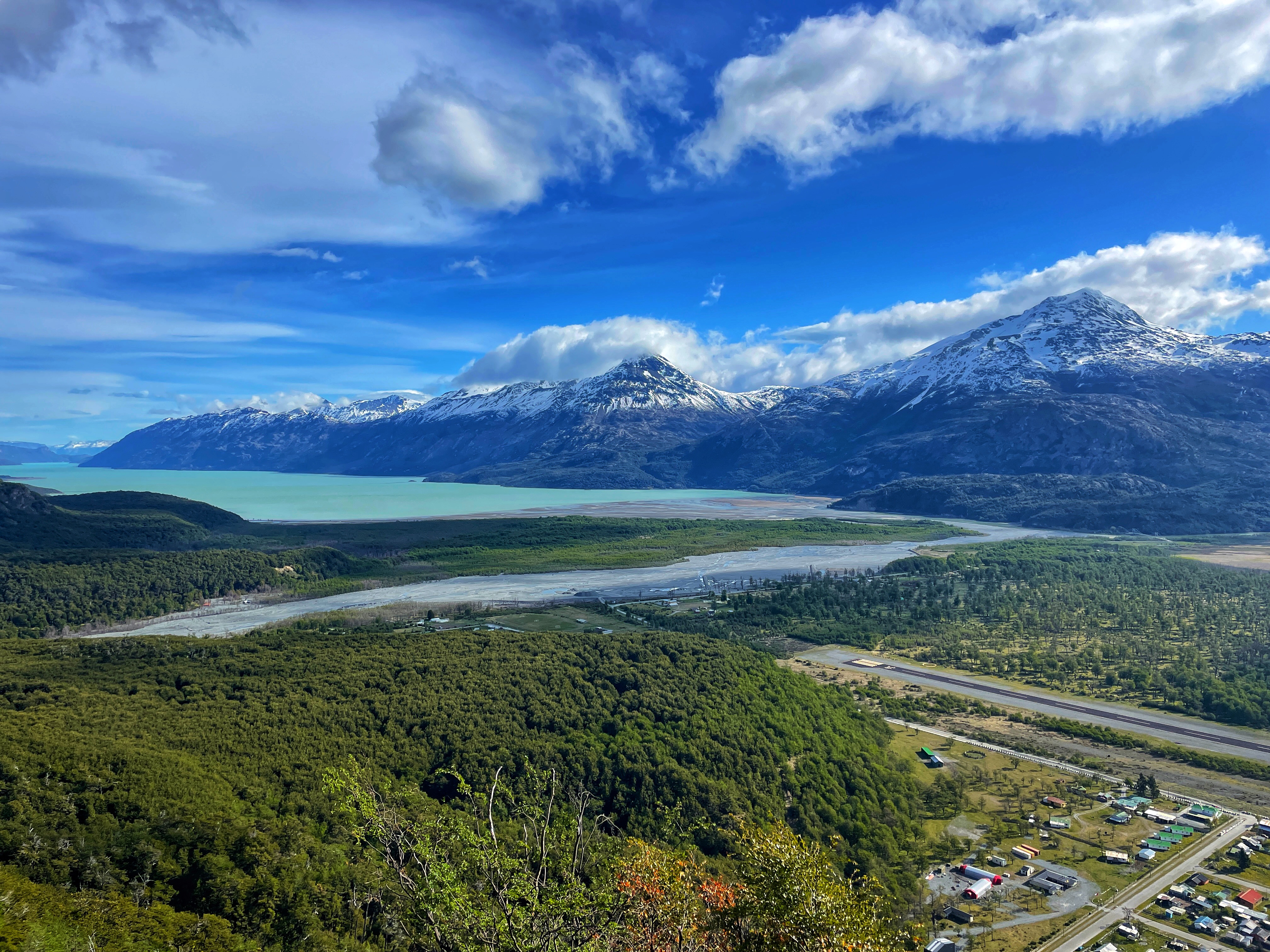
Share this article
